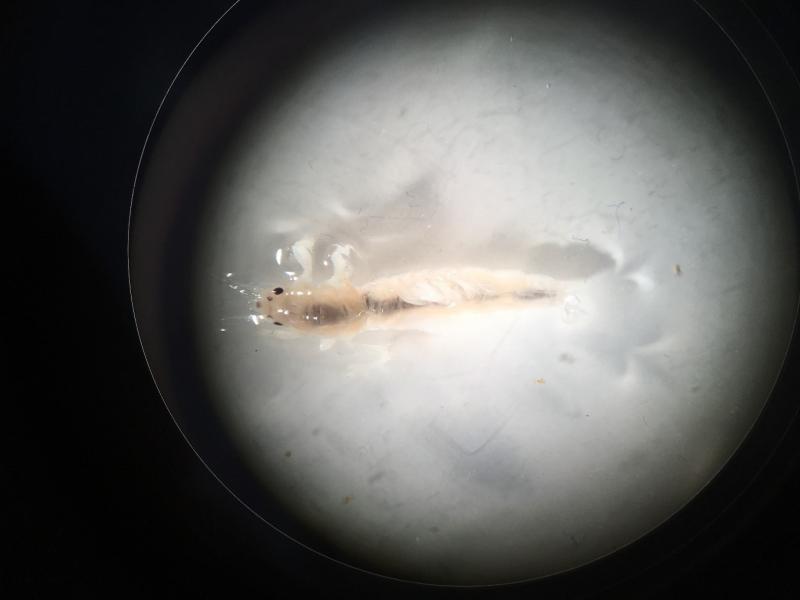Low flows and salmonid rivers: an update
Jess Picken was the first to contribute to our new series of guest blogs in which she outlined plans for her PhD. And clearly, she has been busy! She is back with an update already…
To recap on my previous post, numerous studies have reported that low flow reduces the density of salmonids within streams. What is not so well-known is what, or how, other parts of the salmonids’ ecosystem are also affected by low flow. Riverflies and other aquatic macroinvertebrates make up a large proportion of juvenile salmonid diet, which is subsequently reflected in salmonid growth rate, condition and survival. Understanding how the availability of these macroinvertebrates changes with reduced summer flow is important to help conserve fish species of high UK and European importance.


My life at the moment… macroinvertebrates down the microscope!
My experimental study sites are three carrier streams of the River Itchen where complete control of the flow is achieved by sluice gates at the top of each stream. During the summer, the sluice gates were lowered in order to experimentally induce low-flow conditions. Each stream experienced a four-week low-flow treatment, reduced by 90% (Red9), 50% (Red5), or not altered as a control (Cont). Riverfly and macroinvertebrate sampling occurred before (Bef), during (Dur) and after (Aft) each flow treatment (ie following reinstatement of ‘normal’ flow by opening the sluices), and taken to the laboratory for identification. To decipher the results, the codes in parentheses identify each event and where, so for example: Bef*Red9 is a sample taken from the stream before the flow was reduced by 90%
Now… don’t panic.… let me walk you through what this plot means!
It shows that in the before (Bef*) and (Dur*) samples, macroinvertebrate communities were relatively similar in all flow treatments (Cont/Red9/Red5). We know this because all the Bef* red arrows and all the Dur* red arrows are roughly pointing in the same direction. Black arrows indicate the riverfly and macroinvertebrate species that together make up the whole community.
However, what stands out (to me at least!) is in the after low-flow sampling occasion (Aft*). Aft*Cont is pointing in a markedly different direction to the Aft*Red9 and Aft*Red5. This indicates that following on from re-instatement of normal flow, there was a shift in macroinvertebrate community. Furthermore, the severity of low flow (ie 90% or 50%) treatments are actually remarkably similar. One explanation for this may be that during low-flow, parts of the river bed may become exposed and dry out. Therefore, when flow is reinstated, opportunistic invertebrates may move on to these ‘new’ patches of stream that would not have become available if low-flow had not occurred. There is one more years’ worth of data to collect and analyse to see if this interesting pattern holds. Watch this space.…
Please contact me if you have any questions or comments!
Jessica (j.picken@qmul.ac.uk, or @jesspicken)
